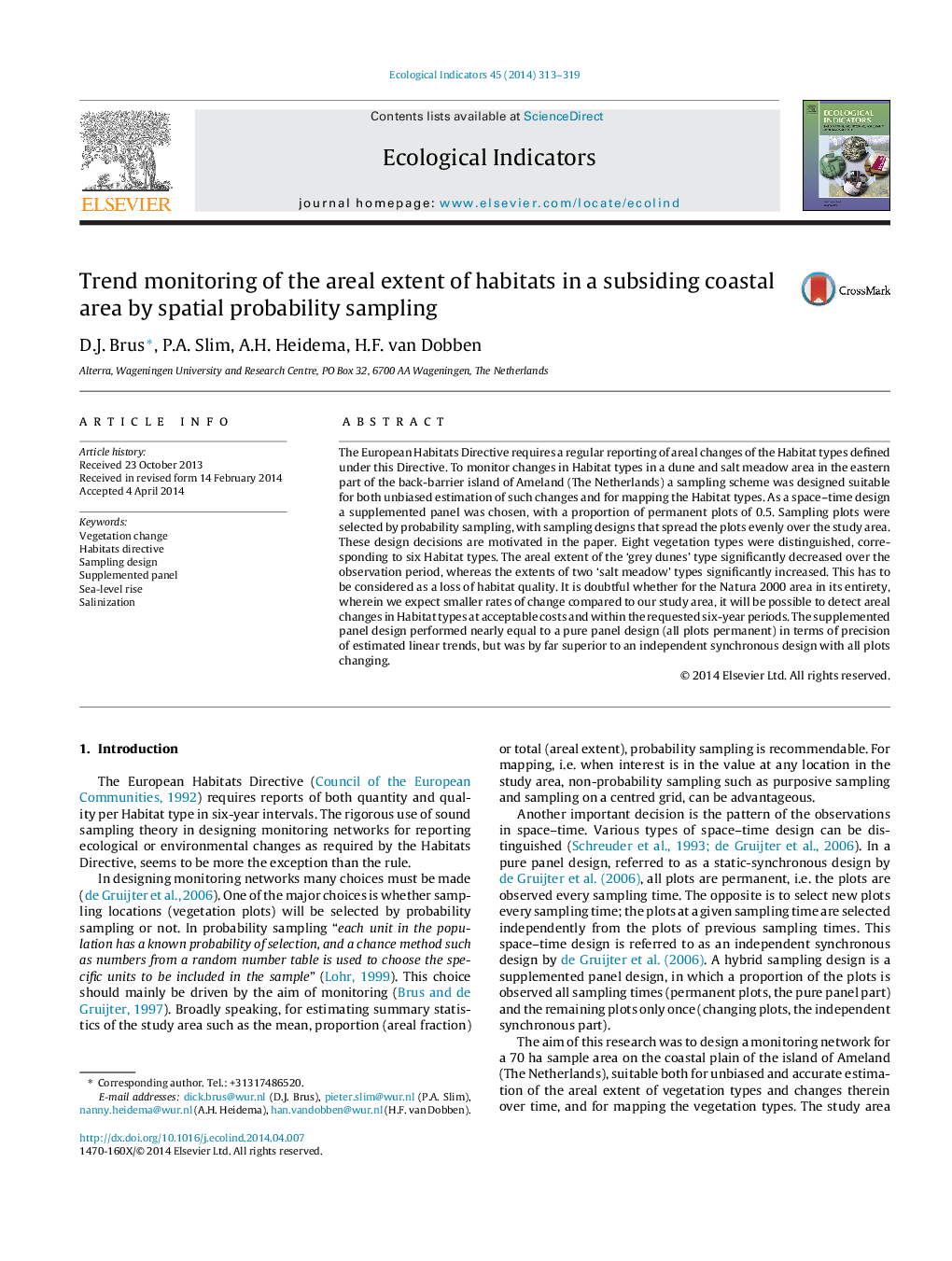| Article ID | Journal | Published Year | Pages | File Type |
|---|---|---|---|---|
| 4373071 | Ecological Indicators | 2014 | 7 Pages |
Abstract
The European Habitats Directive requires a regular reporting of areal changes of the Habitat types defined under this Directive. To monitor changes in Habitat types in a dune and salt meadow area in the eastern part of the back-barrier island of Ameland (The Netherlands) a sampling scheme was designed suitable for both unbiased estimation of such changes and for mapping the Habitat types. As a space-time design a supplemented panel was chosen, with a proportion of permanent plots of 0.5. Sampling plots were selected by probability sampling, with sampling designs that spread the plots evenly over the study area. These design decisions are motivated in the paper. Eight vegetation types were distinguished, corresponding to six Habitat types. The areal extent of the 'grey dunes' type significantly decreased over the observation period, whereas the extents of two 'salt meadow' types significantly increased. This has to be considered as a loss of habitat quality. It is doubtful whether for the Natura 2000 area in its entirety, wherein we expect smaller rates of change compared to our study area, it will be possible to detect areal changes in Habitat types at acceptable costs and within the requested six-year periods. The supplemented panel design performed nearly equal to a pure panel design (all plots permanent) in terms of precision of estimated linear trends, but was by far superior to an independent synchronous design with all plots changing.
Related Topics
Life Sciences
Agricultural and Biological Sciences
Ecology, Evolution, Behavior and Systematics
Authors
D.J. Brus, P.A. Slim, A.H. Heidema, H.F. van Dobben,
